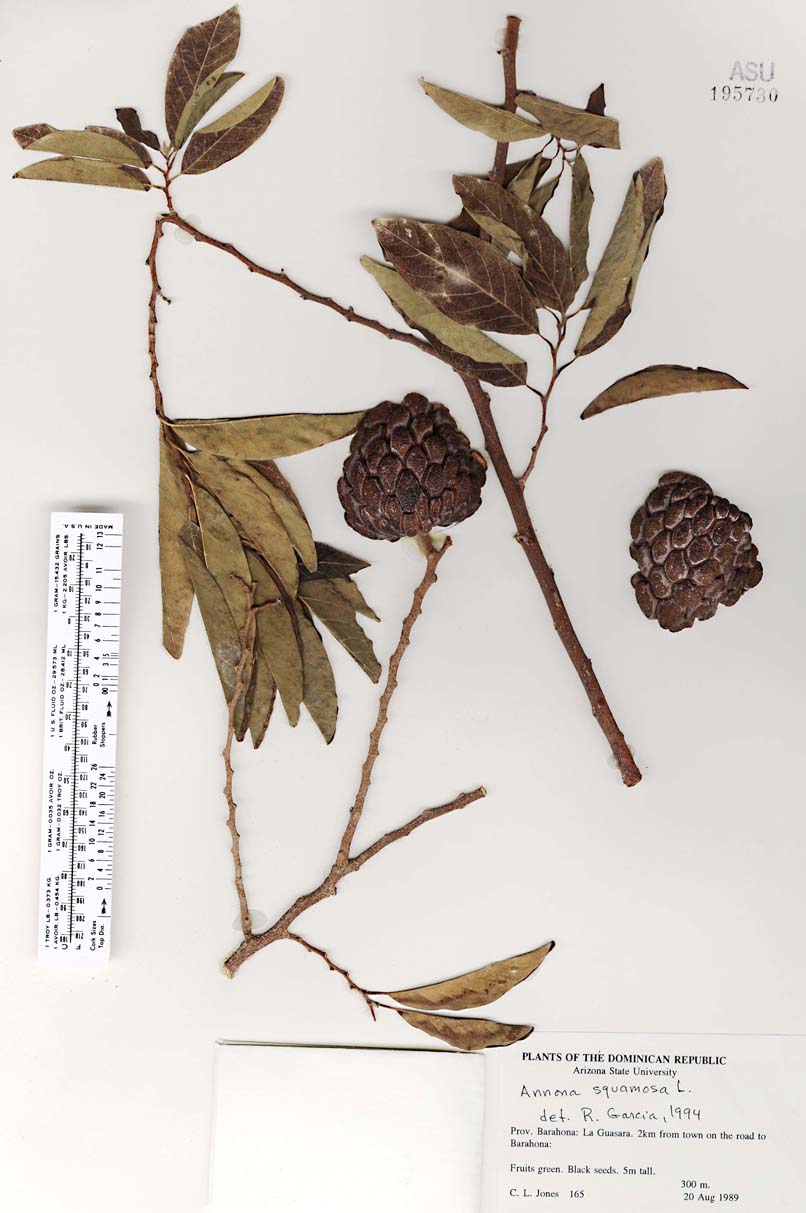|
Annonaceae |
|
|
Trees, shrubs, rarely woody vines, deciduous or evergreen, with aromatic bark, leaves, and flowers. Pith septate to diaphragmed. Leaves alternate, simple, without stipules, petiolate. Leaf blade pinnately veined, unlobed, margins entire. Inflorescences axillary to leaf scars on old wood or to leaves on new shoots, solitary flowers or few-flowered fascicles, pedunculate; bracts or bracteoles present or absent. Flowers bisexual, rarely unisexual; receptacle becoming enlarged, elevated or flat; perianth hypogynous, segments valvate or imbricate; sepals persistent, (2-)3(-4), distinct or basally connate; petals either 6 in 2 unequal whorls of 3 with petals of outer whorl larger, petals of inner whorl fleshier than the outer, often with corrugate nectary zone, or petals 6-12(-15), nearly equal or unequal, veins impressed on inner face; stamens 10-20 or very numerous, hypogynous, spirally arranged, forming ball or flat-topped mass; filament short, stout; anther linear to oblong-linear, extrorse, longitudinally dehiscent; connective apically elongate, connivent; pistils 1-many, superior, 1-carpellate, 1-locular, distinct or connate to various degrees with at least stigmas distinct; placentation marginal, placenta 1; ovules 1-many per pistil; style short, thick; stigma terminal. Fruits berries, distinct, 1-8(-12) per flower, or coalescent, forming syncarps, 1 per flower. Seeds 1-many per pistil, arillate; endosperm ruminate, oily. The family has particular importance in the tropics because of the edible syncarps of some species of Annona ; in the eastern United States the fruit of Asimina triloba (pawpaw) was once much gathered and appreciated. Programs in breeding from selected stock of Asimina have been undertaken (G. A. Zimmerman 1941). Currently, the Pawpaw Foundation is intensively researching means to develop commercially marketable fruits. Recent studies of the chemical properties of Asimina reveal its pesticidal possibilities, and its potential as an anticancer agent (E. M. Norman, pers. comm.) The warm-climate genera Cananga , Rollinia , and Artabotrys have been used as ornamentals.
|
|

